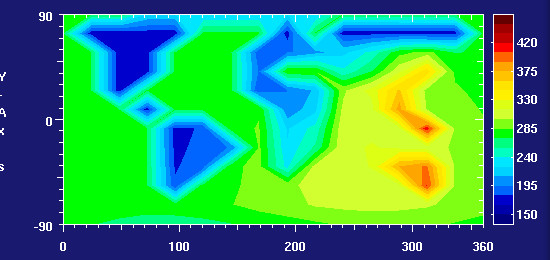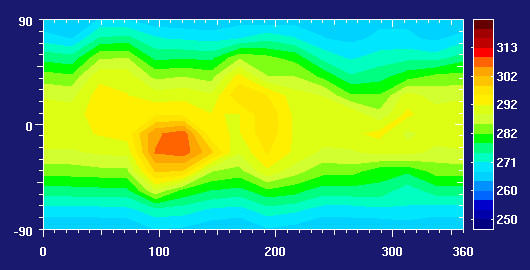Here is the first serious result of my calibration case - Earth. Shown is the temperature distribution in the absence of heat transport by the atmosphere (current radiative temperature).
It's summer in the southern hemisphere, so most of the incoming sunlight hits the southern latitudes. Daily temperature variation is really substantial on land (it cools off quickly without an atmosphere once the sun is down), much less on water (thermal inertia is much higher) - Asia, North America and Europe have cooled substantially due to the lack of sunlight. Antarctica is pretty cool even at noon since it has high albedo. Globe-averaged temperatures are actually quite okay, indicating that the gross balance is okay, just the transport is missing.
Noon over Africa...

... Australia...

... and South America.

I have to say, it's pretty cool what one can achieve with a little work. Once the dynamics for Earth is calibrated, I'll have a go at Helliconia (for those who haven't read the novels, it's a planet orbiting a sun-like star which in turn orbits a blue giant on an eccentric orbit of 2700 years - so it periodically freezes over at apoapsis and thaws at periapsis, giving rise to a periodic destruction of civilization. I suspect the irradiation pattern from two suns is pretty weird...















